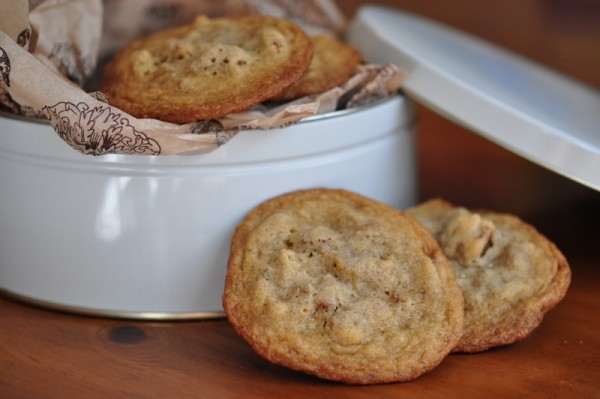Since the day we founded Big Girls, Small Kitchen, cooking and entertaining questions have arrived in our inbox and our comments section. At first we were like, “who? us? advice?” But after more than three years of solving culinary problems, we can honestly say we’re here for you. And since you might want to know the answer to other quarter-life cooks’ questions, we’re unveiling this new, ongoing q&a section to highlight your queries and share our responses.
If you’d like to ask us anything about quarter-life cooking, shoot an email with your question to bgsk [at] biggirlssmallkitchen [dot] com!
**Ask Us Anything: Why Are My Cookies So Thick?**
First of all, thank you so much for all of your fabulous recipes. I received In the Small Kitchen
for my birthday last fall and have made so many delicious things from it over the last few months! It’s one of few books where I KNOW that pretty much anything I make from it is going to be both affordable and amazing. I love it!
I did run into a little bit of difficulty making the Butterscotch Pecan Cookies this afternoon, though. The cookies in your picture look very thin, but mine stayed pretty thick and big when I made them-their shape barely changed from the ball shape they were in on the baking sheet. They also took a little longer to cook.
I know that using butter at room temp. vs melted butter changes the crispiness of cooking. Could the butter have been the culprit here? How creamy is the sugar/butter mixture supposed to get?
-Yael L.
I’ve read a lot about the science of butter temperatures, but to be honest I’ve never found the softness of the butter to be the most crucial factor.
It’s the quantity of flour that affects the texture of cookies most. Humidity and temperature can change how tightly flour is packed and alter the designated proportions in a recipe. The best way to insure against super thick cookies is to measure the flour like this: Scoop up some flour and sprinkle it into the measuring cup you’re using until it overflows. Gently scrape off the top of the cup with a knife gently, without pressing down. Repeat til you have the right amount of flour for the recipe.
I find if I’m diligent about this method, I get more consistent baked goods. The method of sprinkling and scraping prevents you from packing in more flour than the recipe really calls for, therefore making the cookies more cake-like than intended.
If this left you craving a cookie, here are Chocolate Chip Cookies, Coffee Sables, Espresso Biscotti, Banana/Chocolate Chip/Granola Cookies, and Snickerdoodles.
























